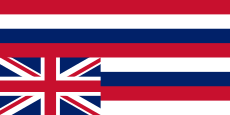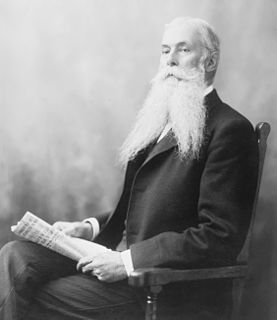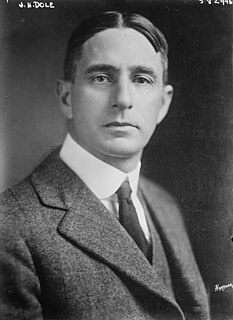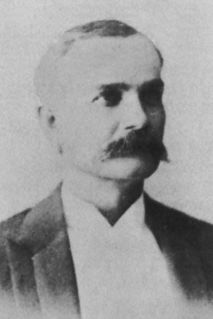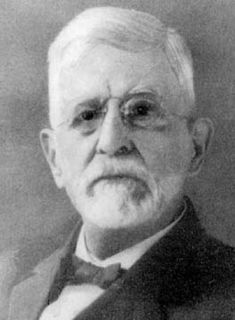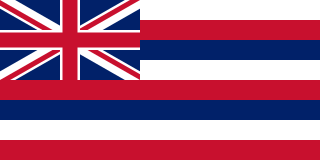
The Republic of Hawaiʻi was a short-lived puppet state in Hawaiʻi between July 4, 1894, when the Provisional Government of Hawaii ended, and August 12, 1898, when it was annexed by the United States as an organized incorporated territory of the United States. In 1893, U.S. Minister to Hawaii John L. Stevens and white native-born subjects of the Kingdom of Hawaii overthrew Queen Liliʻuokalani after she rejected the 1887 Bayonet Constitution which was forced on Hawaii. The perpetrators intended for Hawaii to be annexed by the United States, but President Grover Cleveland, a Democrat opposed to imperialism, refused.
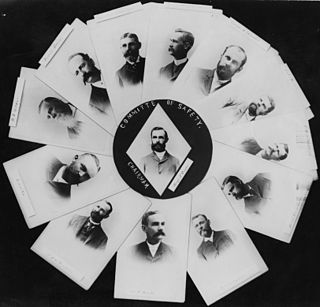
The Committee of Safety, formally the Citizen's Committee of Public Safety, was a 13-member group of the Annexation Club. The group was composed of mostly Hawaiian subjects and American citizens who were members of the Missionary Party, as well as foreign residents in the Kingdom of Hawaiʻi that planned and carried out the overthrow of the Kingdom of Hawaiʻi on January 17, 1893. The goal of this group was to achieve annexation of Hawaiʻi by the United States. The new independent Republic of Hawaiʻi government was thwarted in this goal by the administration of President Grover Cleveland, and it was not until 1898 that the United States Congress approved a joint resolution of annexation creating the U.S. Territory of Hawaiʻi.

Lorrin Andrews Thurston was an American lawyer, politician, and businessman born and raised in the Kingdom of Hawaiʻi. The grandson of two of the first Christian missionaries to Hawaii, Thurston played a prominent role in the overthrow of the Hawaiian Kingdom that replaced Queen Liliʻuokalani with the Republic of Hawaii, dominated by American interests. He published the Pacific Commercial Advertiser, and owned other enterprises. From 1906 to 1916 he and friends lobbied with national politicians to create a National Park to preserve the Hawaiian Volcanoes.

The Provisional Government of Hawaii, abbreviated "P.G.", was proclaimed after the coup d'état on January 17, 1893, by the 13-member Committee of Safety under the leadership of its chairman Henry E. Cooper and former judge Sanford B. Dole as the designated President of Hawaii. It replaced the Kingdom of Hawaii after the overthrow of Queen Liliʻuokalani as a provisional government until the Republic of Hawaii was established on July 4, 1894.
The Wilcox Rebellions were a plot in 1888, a revolt in 1889, and a counter-revolution in 1895, led by Robert William Wilcox against the governments of Hawaii. He was considered a populist revolutionary and menace to both the government of the Kingdom of Hawaii under King David Kalākaua and the Republic of Hawaiʻi under Sanford Dole. Wilcox's revolts were part of the Hawaiian Revolutions.
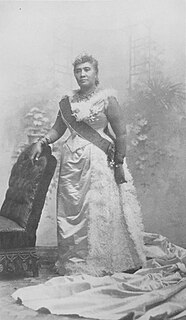
The proposed 1893 Constitution of the Kingdom of Hawaiʻi would have been a replacement of the Constitution of 1887, primarily based on the Constitution of 1864 put forth by Queen Lili'uokalani. While it never became anything more than a draft, the constitution had a profound impact on Hawaiʻi's history: it set off a chain of events that eventually resulted in the overthrow of the Kingdom of Hawaii.

The overthrow of the Kingdom of Hawaii began on January 17, 1893, with a coup d'état against Queen Liliʻuokalani on the island of Oahu by subjects of the Kingdom of Hawaii, United States citizens, and foreign residents residing in Honolulu. A majority of the insurgents were foreigners. They prevailed upon American minister John L. Stevens to call in the U.S. Marines to protect United States interests, an action that effectively buttressed the rebellion. The revolutionaries established the Republic of Hawaii, but their ultimate goal was the annexation of the islands to the United States, which occurred in 1898.

The Blount Report is the popular name given to the part of the 1893 United States House of Representatives Foreign Relations Committee Report regarding the overthrow of the Kingdom of Hawaii. The report was conducted by U.S. Commissioner James H. Blount, appointed by U.S. President Grover Cleveland to investigate the events surrounding the January 1893 overthrow of the Kingdom of Hawaii.

The Hawaiian rebellions and revolutions took place in Hawaii between 1887 and 1895. Until annexation in 1898, Hawaii was an independent sovereign state, recognized by the United States, United Kingdom, France and Germany with exchange of ambassadors. However, there were several challenges to the reigning governments of the Kingdom and Republic of Hawaii during the 8 1⁄2-year (1887–1895) period.

Princess Kaiulani is a 2009 film based on the life of Princess Kaʻiulani (1875–1899) of the Kingdom of Hawaiʻi.

Luther Aholo was a politician who served many political posts in the Kingdom of Hawaii. He served multiple terms as a legislator from Maui and Minister of the Interior from 1886 to 1887. Considered one of the leading Hawaiian politicians of his generation, his skills as an orator were compared to those of the Ancient Greek statesman Solon.

John Francis Colburn was a businessman and politician of the Kingdom of Hawaii. He served as the last Minister of the Interior of Queen Liliuokalani. Even though he was part Hawaiian ancestry on his maternal side, Colburn was a key figure in the overthrow of the Hawaiian monarchy and was a proponent of annexation to the United States. Colburn was the treasurer of the estate of Queen Kapiolani.

The 1892 Session of the Legislature of the Kingdom of Hawaii, also known as the Longest Legislature, was a period from May 1892 to January 1893 in which the legislative assembly of the then-independent Kingdom of Hawaii met for its traditional bi-annual session. This unicameral body was composed of the upper House of Nobles and the lower House of Representatives. This would be the first session during the reign of Queen Liliʻuokalani and the last meeting of the legislative assembly during the Hawaiian monarchy. Three days after the prorogation of the assembly, many of the political tension developed during the legislative debates and the queen's attempt to promulgate a new constitution while her legislators were not in session led to the overthrow of the Kingdom of Hawaii on January 17, 1893.

David William Pua, also known as D. W. Pua, was a Native Hawaiian politician during the Kingdom of Hawaii. He served as a legislator during the last years of the Legislature of the Kingdom of Hawaii and became a member of the Hui Aloha ʻĀina, founded after the overthrow of the monarchy to protest attempts of annexation to the United States.
Jonathan Austin was a veteran of the American Civil War, president of Paukaa Sugar Company, and Minister of Foreign Affairs for the Kingdom of Hawaii during the reign of Kalākaua.

When King Kalākaua began his reign on February 12, 1874, the monarch was constitutionally empowered to appoint and remove the Kingdom of Hawaii cabinet ministers. The four cabinet positions were Attorney General, Ministrer of Finance, Minister of Foreign Affairs and Minister of the Interior. The royal cabinet ministers were also ex-officio members of the House of Nobles in the legislature and the Privy Council of State, a larger body of advisors.
The Cabinet of the Kingdom of Hawaii was a body of the top executive officials appointed to advise the sovereign of the Kingdom of Hawaii from 1845 to 1893. The subsequent regimes of the Provisional Government and the Republic of Hawaii retained the structure of the cabinet and minister positions under the presidency of Sanford B. Dole from 1893 until 1898.
